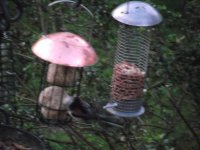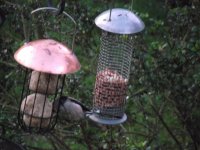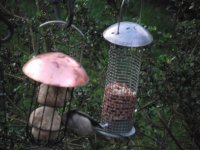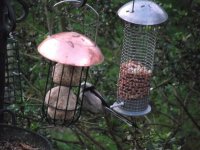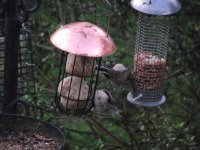Matt Griffiths
ad. ♂ Blackcap
A flock of Long-tailed Tits containing a rather light-headed individual has been visiting the bird feeders in my garden during the last two evenings. This evening it made three visits, and I managed some really rubbish pics on the second occasion before remembering my camera does video and got two video clips when it returned. Unfortunately it returned on its own on the last occasion, so there's no others to compare it with. Also I haven't seen it during better light yet.
Pics below. As can be seen, the bird lacks the black band above each eye, and the head is largely white with some very fine dusky markings. So far I haven't been able to study the extent of the markings on the belly/flank area. Are there other features I should look at if I see it again? Bird in question was still at fat balls in 5th pic. Will try to upload videos in a few minutes.
Would appreciate others' thoughts on its racial ID. Thanks.
Kind regards,
Matt
Pics below. As can be seen, the bird lacks the black band above each eye, and the head is largely white with some very fine dusky markings. So far I haven't been able to study the extent of the markings on the belly/flank area. Are there other features I should look at if I see it again? Bird in question was still at fat balls in 5th pic. Will try to upload videos in a few minutes.
Would appreciate others' thoughts on its racial ID. Thanks.
Kind regards,
Matt




